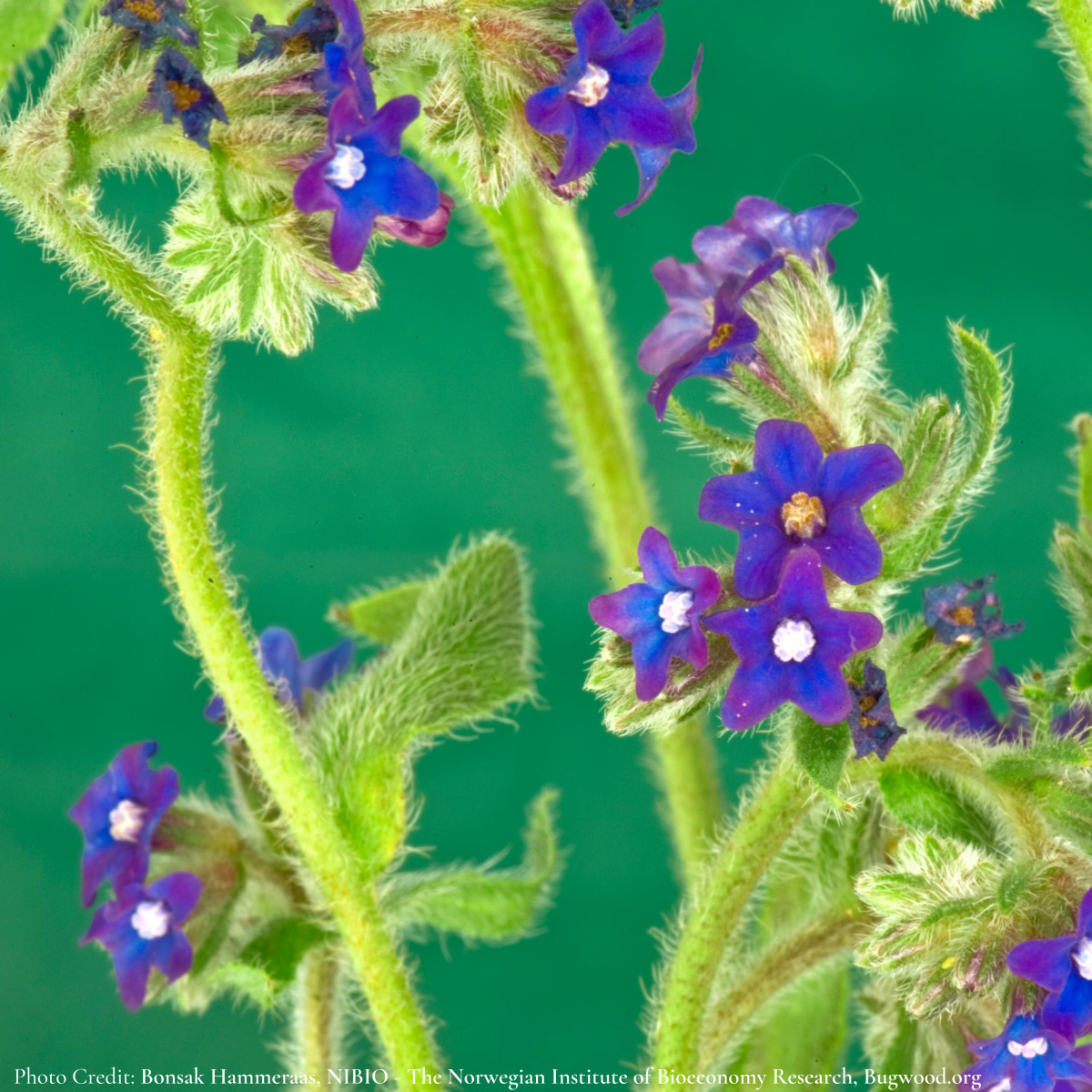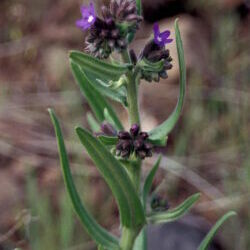
Priority: Eradicate
General: Deep-rooted plant that forms basal plants in the first year and curled, fiddleneck purple-blue flower stems in the second year.
Height: 30-80cm tall.
Flowers: Tubular flowers on the ends of coiled stems. The flowers start off a red hue and turn to purplish-blue with white centers. They start as a coiled cluster and gradually open as the flowers emerge.
Leaves/Stems: Lance-shaped leaves are covered in stiff hairs and succulent. Leaves are 6-20cm long. Plants have several stems that are angular and hairy as well.
Root: Deep taproot.
Anchusa, Alkanet, Bee Bread, Ox’s Tongue, Starflowers, Common Borage, Orchanet
Blueweed (Echium vulgare)
Differences: Blueweed has stiff hairs but they have swollen bases that make the stem look spotted. Common bugloss does not have these “spots”.
Where did it come from? Europe.
Where does it grow here? Common Bugloss prefers warm environments with sandy, gravelling soils. There is only one site in our region on Highway 12 but can be found in other southern BC areas.
Reproduction: Seed is the main way that this plant grows but root fragments can also sprout. One plant can produce 900 seeds.
When does it grow, flower & seed? Sprouts April-May. Flowers June-July. Seeds August-September.
Spreads By: A variety methods spread this invasive plant: wind, vehicles, soil & gravel movement, contaminated hay. Wildlife also eat the seeds.
Plant Type: Perennial. It forms a low-growing plant in the first year (basal rosette) and in the second year, flowering stems grow.
- It spreads into hayfields and causes hay bales to go moldy because the leaves have a high moisture content (succulent).
- It reduces the yield in pasture & hay lands.
- Review your property regularly for this species.
- Treatment Remove small patches before it flowers & sets seed. It is easier to hand-pull plants early when the taproot is less developed. Cutting & mowing can reduce the seed but the plant can re-grow from the root.
- Cover bare patches or disturbed soil by planting or seeding with non-invasives.
- Check areas where you have removed invasives for any new plants that year and in future growing seasons.
- Dispose of invasive plants responsibly. Bag them for disposal at the local landfill. Composting and burning is not recommended.
- Contact LRISS for specific treatment recommendations.
E-Flora BC: Electronic Atlas of the Flora of British Columbia
Okanagan Invasive Species Online website
Southern Interior Weed Management Committee. 2016. Invasive Plants of the Southern Interior BC. 86pgs.
Photo Gallery



